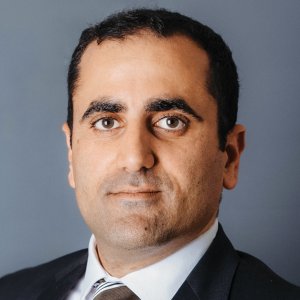The Bright Future for Tourism in Saudi Arabia

STORY INLINE POST
In recent years, international events, such as Expo 2020 in Dubai, United Arab Emirates, and the preparations for the upcoming World Cup in Qatar, have contributed to bringing the Middle East and North Africa (MENA) region into the international spotlight as these events attract thousands of tourists and project the host countries internationally. Proof of this is Expo Dubai, which has already attracted over 10 million international visitors, making it the world's largest on-site event after the pandemic, while Qatar expects 1.5 million spectators to attend the FIFA World Cup in November.
This significant flow of tourists attracted by international sports events or universal expositions not only represents direct benefits for the tourism sector in these countries but also an opportunity to highlight the economic and investment potential offered by the region.
For this reason, not only the United Arab Emirates and Qatar but also other countries in the region have launched significant domestic strategies to host some of the largest and most important international events. Such is the case of the Kingdom of Saudi Arabia (KSA).
KSA, which is the leading economy in the MENA region with a GDP of $804.9 billion in 2021 and one of the highest purchasing powers per capita (US$20,110 per year), has launched in a short period of time important initiatives to boost tourism, allowing it to project its potential as one of the world’s big leisure tourism hubs.
To address Saudi tourism, we must start in 2019, a year in which this country recorded growth in international tourist arrivals of 15.5 percent. As a result, the Kingdom became one of the most promising regional and global players in the sector.
At this level of international recognition reached by the KSA, the announcement of the opening of its borders for non-religious tourism was key, since this strategy represented an important step toward welcoming more international visitors for tourism, entertainment and recreation purposes. With these reforms, citizens of more than 49 countries are now eligible to apply for a tourist visa with multiple entries valid for one year and a stay of up to 90 days.
The fact is that before 2019, visiting Saudi Arabia had to be for very specific reasons, such as religion, work and business. Religious tourism comes from the fact that the country is home to the holy city of Mecca and year after year receives millions of Muslims who make pilgrimages (Hajj and Umrah) according to the pillars of Islam. Besides Muslim pilgrims, the Kingdom was also allowing the entry of businessmen and migrant workers holding a business visa or an invitation letter from the authorities. Now, the new strategy adopted allows travel for tourism purposes, which was previously limited.
We have to understand that this plan to open the country to tourism is part of KSA’s Vision 2030, which is a strategic economic framework launched to reduce its dependence on the oil and gas industries. In this plan for economic diversification, the Kingdom aims to make the tourism sector the second-most important sector for the national economy, only after the energy sector, allowing for a 10 percent contribution to GDP by 2030.
To achieve this goal, several initiatives have been launched to attract the attention of thousands of tourists, initiatives that have already been successful over the last two years reflecting accelerated results, especially in spite of the COVID-19 health crisis.
Within these results we can mention the growth in travel and tourism sector revenues by 11.7 percent by the end of 2019, placing Saudi Arabia as the country that grew the most not only in the Middle East but also among the world's largest economies that are part of the Group of 20 (G20).
Moreover, as part of its goal to be among the main drivers of the global tourism recovery after COVID-19, the KSA hosted the G20 Tourism Ministers' meeting in October 2020. Another important step was the creation of the Tourism Development Fund with initial capital of US$4 billion to boost the growth of the entire sector and its agenda of events.
Among its steps toward the post-COVID economic recovery, the country also promoted the
construction plan of luxury resorts on 50 islands off the coast of the Red Sea. It is worth mentioning that as a result of its efficient testing and vaccination centers, Saudi Arabia in early 2021 was classified as one of the countries with the lowest risk of spreading the virus, placing it alongside countries such as New Zealand, Australia, Singapore and Iceland. The Saudi efficiency in curbing the spread of the pandemic (thanks to its experience in containing MERS in 2015), as well as its investment and the expansion of new projects in the hotel sector, have allowed Saudi Arabia to be recognized for its efforts to maintain and boost tourism in the context of a pandemic.
Now, with the gradual lifting of travel restrictions imposed by the coronavirus, we are witnessing a country that is launching an ambitious calendar of international events. These include sporting, artistic and entertainment events that have attracted not only locals but also international attention.
Among the main events hosted by the KSA are the Formula One Grand Prix in Jeddah that took place last December. In the sports category, Saudi Arabia also welcomed the Dakar Rally and the Spanish football championship in Riyadh. In the category of art and culture, the Saudi government presented its first art exhibition, the Diriyah Contemporary Art Biennale, which opened on Dec. 11, 2021, and brought together more than 60 acclaimed artists from Saudi Arabia and around the world. In addition, the first Red Sea International Film Festival was held in Jeddah, as well as the five-month long Riyadh Season, which offered events including gastronomic experiences and huge music festivals, with more than 180,000 people attending.
We are certainly witnessing significant growth in Saudi tourism. This growth has to be recognized for the fact that in just two years and with a pandemic going on, the country placed itself in the spotlight with the important agenda of international events held but that's just the beginning, as it will continue to move forward with new upcoming events.
Such has been the importance of this boost in the sector that in the context of a post-pandemic economic recovery, the KSA recorded 36.4 percent growth in tourism and travel revenues with a full calendar of events. In this sense, the projected annual increase for this sector stands at 7.59 percent, which reflects the important efforts that will be carried out in the coming years to host more events and continue with the important tourist projections for the Kingdom, which also supports it as a business and investment center.
In a country where attention and resources are focused on boosting the tourism sector, a sector that requires a wide variety of supplies, from infrastructure to food and beverage, this undoubtedly opens up a range of opportunities for Mexican businesses.
For the tourism industry only, we are talking about investments by the Kingdom of around US$810 billion in major tourism projects over the next 10 years and a goal of creating 1 million jobs. This means, we will be seeing the deployment of major projects and with it a positive impact on business opportunities for Mexico as Saudi Arabia accelerates its path toward the Kingdom's National Tourism Strategy goals and in general its Vision 2030.























